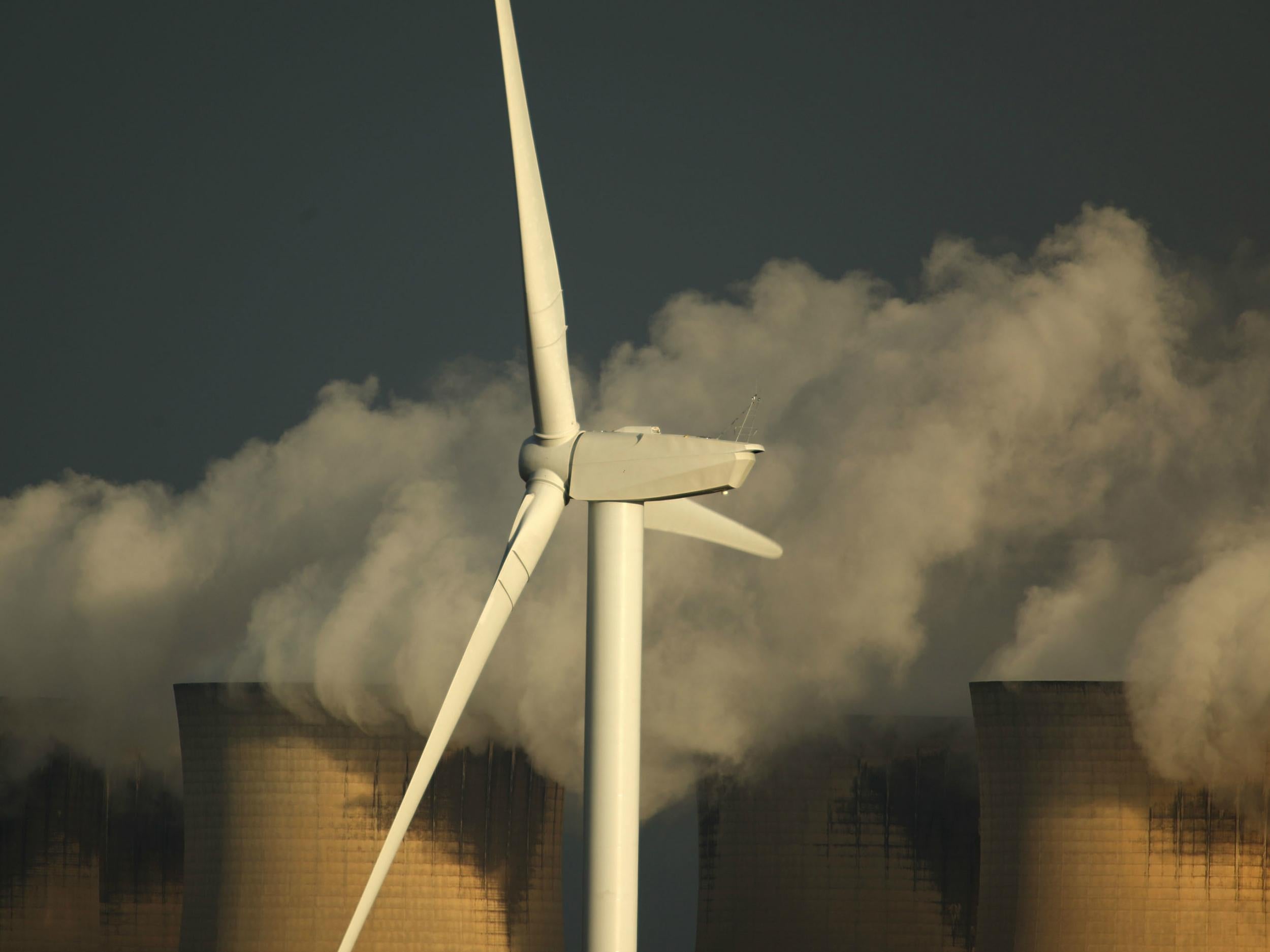Global warming will boost UK wind power, study suggests
Scientists estimate a rise of 1.5C could see a 10 per cent increase in UK onshore wind energy generation

Our planet is warming, presenting innumerable challenges for life around the world, from potentially catastrophic sea level rises as ice caps melt, to desertification and the mass extinction of species.
But in the UK the prospect of a warmer climate appeals to some. Wine and fruit producers are hoping for larger harvests, while the government has noted that declining sea ice in the Arctic could see lower shipping costs and new trade routes.
The latest research to predict a benefit from global temperature rises says the UK could see energy output from onshore wind turbines increase over the coming decades, as higher temperatures whip up stronger winds.
According to researchers from the British Antarctic Survey, the University of Oxford and the University of Bristol, data suggests the UK and large parts of northern Europe could become windier if global temperatures reach 1.5C above pre-industrial levels.
The findings mean wind could become an increasingly important source of energy generation, in Britain as well as in parts of Germany, Poland and Lithuania.
Using data from 282 onshore wind turbines collected over 11 years, and with climate projections from forecasting organisation the HAPPI project, the research team estimates there could be a 10 per cent increase in UK onshore wind energy generation if temperatures rise an average of 1.5C above what they were in the mid-18th Century.
Lead author of the research, climate modeller Dr Scott Hosking at the British Antarctic Survey, said: “In future, nine months of the year could see UK wind turbines generating electricity at levels currently only seen in winter. Future summers could see the largest increase in wind generation. Therefore, wind could provide a greater proportion of the UK’s energy mix than has been previously assumed.”
But experts warn any increase in energy generation is more of a silver lining within the larger problem of global temperature rises.
Dr Jonathan Marshall, energy analyst at the Energy and Climate Intelligence Unit, told The Independent: "While warming temperatures could boost wind generation, this is not something that should be relied on to meet carbon targets or ensure demand is always met."
He added: "The UK is one of the windiest countries in Europe and has unparalleled offshore resources, but without a change in policy to ramp up capacity the majority of this potential will continue to go to waste. Evidence from auctions around the world show how cheap wind energy has become, and highlights the risk of falling behind other nations if we don't harness our natural resources."
Separate research indicates the UK may not have to wait long to see the kind of temperatures the models are based on. Earlier this year a UN report said an average global temperature rise of 1.5C could be upon us as early as 2040.
Wind power is already a significant means of clean energy generation. In the UK it was reported that windfarms provided more electricity than Britain’s nuclear power stations in the first three months of 2018, producing 18.8 per cent of the UK’s energy needs. It was the first time it has ever done so across a quarter.
In Europe, wind currently accounts for 18 per cent of total generating capacity and the European Commission’s 2030 energy strategy set a renewables target of at least 27 per cent.
Despite these goals and wind’s growing importance as an energy provider the UK government has made policy decisions which have seen planning applications for new onshore wind developments plummet by 94 per cent since their implementation in 2015.
Meanwhile, the government has continued to support fossil fuel exploitation – notably calling for a US-style fracking “revolution”. A recent study by academics at Cardiff Business School found that more than 6,000 fracking wells would be required just to halve the UK’s imports of gas.
Last year, climate research commissioned by the Association of British Insurers found that rather than basking in sunshine which would fuel a surge in wine or fruit production in the UK, the country will instead be subjected to a 50 per cent rise in damaging windstorms. Meanwhile, floods, droughts and heatwaves could cost the economy tens of billions of pounds and hundreds of thousands of jobs by 2050, according to a 2017 report commissioned by conservation charity WWF.
In addition, the government’s Committee on Climate Change warned a year earlier that the UK is poorly prepared for a warming climate.
It said: “Any increases in maximum wind speeds with climate change experienced during storms would have significant implications for many infrastructure networks,” including roads, railways and power and communication lines.
The effects of a steadily warming world are already being felt in many areas, and will become more pervasive in the near future, scientists believe.
According to an ongoing temperature analysis conducted by scientists at NASA’s Goddard Institute for Space Studies, the average global temperature on Earth has increased by about 0.8C since 1880. Two-thirds of the warming has occurred since 1975, at a rate of roughly 0.15-0.20C per decade.
Join our commenting forum
Join thought-provoking conversations, follow other Independent readers and see their replies
Comments